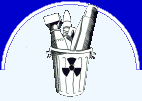


 |
 |  | ||||
|
|
|
|
| |||
| vous etes ici Homepage > News > External sources > 5 ex-Soviet republics in Central Asia sign nuclear free zone treaty | |
|
GREAT NEWS: 5 ex-Soviet republics in Central Asia sign nuclear free zone treaty Published 10 September 2006 The Associated Press Published: September 8, 2006 SEMEY, Kazakhstan. The five ex-Soviet republics in Central Asia signed a treaty on Friday to create a nuclear-free zone in the strategic energy-rich region north of Iran and Afghanistan. By signing the treaty, the five nations with a combined population of about 60 million and a territory of more than 3.8 million square kilometers (1.5 million square miles), commit themselves not to produce, buy or allow the deployment of nuclear weapons on their soil. Such treaties provide weaker nations with some protection from a nuclear threat as they come with legally binding protocols attached, by which nuclear countries agree to view these zones as off-limits to their nuclear weapons. "The countries of our region declared a firm commitment to the principles of disarmament and nonproliferation. This is our contribution to ensuring global security," Kazakh Foreign Minister Kasymzhomart Tokayev said at the signing ceremony. "This is a region where the political interests of the biggest countries of the world clash," said his Uzbek counterpart Vladimir Norov. Tajikistan, Turkmenistan and Kyrgyzstan also are included in the zone. The five official nuclear powers - the United States, Britain, France, Russia and China - are often reluctant to recognize such zones because they could limit their future nuclear deployments or the movement of their nuclear-armed forces through those areas. The Central Asian nuclear-free zone currently is backed only by Russia and China. The United States has expressed concern that the Central Asian treaty could ban transit by nuclear powered or nuclear-capable ships and aircraft. The region lies along key routes to Afghanistan and Iran, which the United States claims is developing nuclear weapons. The United States also has forces stationed in Kyrgyzstan. Britain, France and the United States last year called for further discussions on the Central Asian nuclear free zone, saying the language of the treaty was ambiguous and could give previous security agreements precedence over the treaty. One concern was a 1992 treaty that Russia signed with Kazakhstan, Kyrgyzstan, Tajikistan and Uzbekistan which Moscow claims could allow missiles to be deployed in the region. Tokayev said Friday that question remains open to interpretation. The British Embassy in Kazakhstan said Thursday that London was concerned about the content of the treaty and had conveyed its position to the Central Asian nations. It didn’t elaborate. The treaty was signed in the symbolically potent eastern Kazakh city of Semey, formerly Semipalatinsk, adjacent to the former largest Soviet nuclear test site. The Semipalatinsk site saw 458 air, ground and underground nuclear tests over its 40-year service. The explosions have affected 1.7 million people across an area of 300,000 square kilometers (12,000 square miles), according to Kazakh officials. A photo exhibition at the auditorium where the treaty was signed displayed grim reminders of the effects of nuclear blasts, including photos of children with birth defects. The Soviet military also deployed a considerable nuclear arsenal in Kazakhstan’s vast uninhabited steppes. President Nursultan Nazarbayev’s first order after Kazakhstan declared independence in 1991 was to shut down the Semipalatinsk site, and the entire nuclear arsenal - at the time the fourth largest in the world - was withdrawn from the country in the early 1990s. Under the treaty, the Central Asian nations also commit themselves to enhanced International Atomic Energy Agency safeguards regarding security of nuclear facilities and radioactive waste - something that could ease concerns about possible use of the region as a source or transit corridor for smuggling nuclear materials. The Central Asian nuclear free zone will be the first such a zone in the northern hemisphere. Three nuclear free zones are currently in force - covering Latin America and the Caribbean, the South Pacific, and Southeast Asia - and one more is pending in Africa. SEMEY, Kazakhstan The five ex-Soviet republics in Central Asia signed a treaty on Friday to create a nuclear-free zone in the strategic energy-rich region north of Iran and Afghanistan. By signing the treaty, the five nations with a combined population of about 60 million and a territory of more than 3.8 million square kilometers (1.5 million square miles), commit themselves not to produce, buy or allow the deployment of nuclear weapons on their soil. Such treaties provide weaker nations with some protection from a nuclear threat as they come with legally binding protocols attached, by which nuclear countries agree to view these zones as off-limits to their nuclear weapons. "The countries of our region declared a firm commitment to the principles of disarmament and nonproliferation. This is our contribution to ensuring global security," Kazakh Foreign Minister Kasymzhomart Tokayev said at the signing ceremony. "This is a region where the political interests of the biggest countries of the world clash," said his Uzbek counterpart Vladimir Norov. Tajikistan, Turkmenistan and Kyrgyzstan also are included in the zone. The five official nuclear powers - the United States, Britain, France, Russia and China - are often reluctant to recognize such zones because they could limit their future nuclear deployments or the movement of their nuclear-armed forces through those areas. The Central Asian nuclear-free zone currently is backed only by Russia and China. The United States has expressed concern that the Central Asian treaty could ban transit by nuclear powered or nuclear-capable ships and aircraft. The region lies along key routes to Afghanistan and Iran, which the United States claims is developing nuclear weapons. The United States also has forces stationed in Kyrgyzstan. Britain, France and the United States last year called for further discussions on the Central Asian nuclear free zone, saying the language of the treaty was ambiguous and could give previous security agreements precedence over the treaty. One concern was a 1992 treaty that Russia signed with Kazakhstan, Kyrgyzstan, Tajikistan and Uzbekistan which Moscow claims could allow missiles to be deployed in the region. Tokayev said Friday that question remains open to interpretation. The British Embassy in Kazakhstan said Thursday that London was concerned about the content of the treaty and had conveyed its position to the Central Asian nations. It didn’t elaborate. The treaty was signed in the symbolically potent eastern Kazakh city of Semey, formerly Semipalatinsk, adjacent to the former largest Soviet nuclear test site. The Semipalatinsk site saw 458 air, ground and underground nuclear tests over its 40-year service. The explosions have affected 1.7 million people across an area of 300,000 square kilometers (12,000 square miles), according to Kazakh officials. A photo exhibition at the auditorium where the treaty was signed displayed grim reminders of the effects of nuclear blasts, including photos of children with birth defects. The Soviet military also deployed a considerable nuclear arsenal in Kazakhstan’s vast uninhabited steppes. President Nursultan Nazarbayev’s first order after Kazakhstan declared independence in 1991 was to shut down the Semipalatinsk site, and the entire nuclear arsenal - at the time the fourth largest in the world - was withdrawn from the country in the early 1990s. Under the treaty, the Central Asian nations also commit themselves to enhanced International Atomic Energy Agency safeguards regarding security of nuclear facilities and radioactive waste - something that could ease concerns about possible use of the region as a source or transit corridor for smuggling nuclear materials. The Central Asian nuclear free zone will be the first such a zone in the northern hemisphere. Three nuclear free zones are currently in force - covering Latin America and the Caribbean, the South Pacific, and Southeast Asia - and one more is pending in Africa.
|
Also in this section | ||||||||||||||||||||||||||||||||||||||||||||||||||||||||||||||||||||||
| visites : | 1274271 |
|
Site powered by SPIP
design et fonction Easter-Eggs |